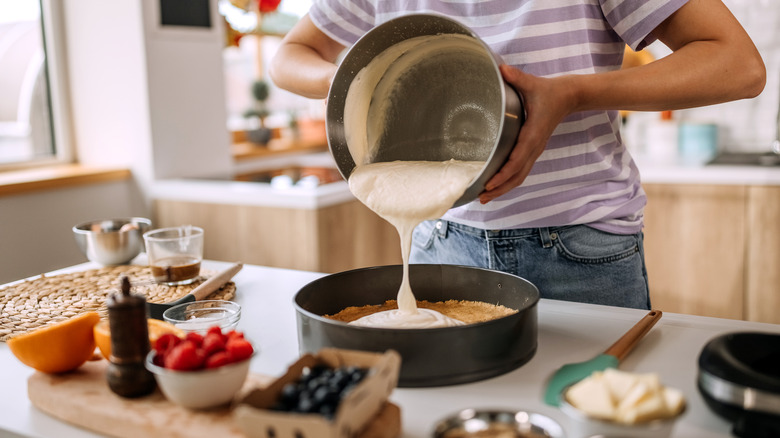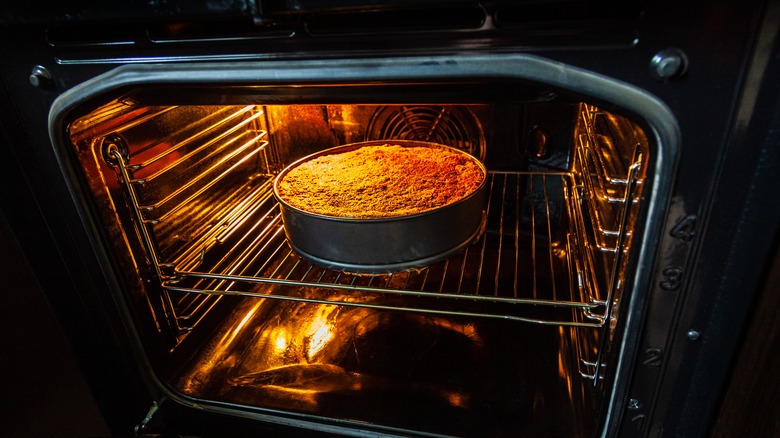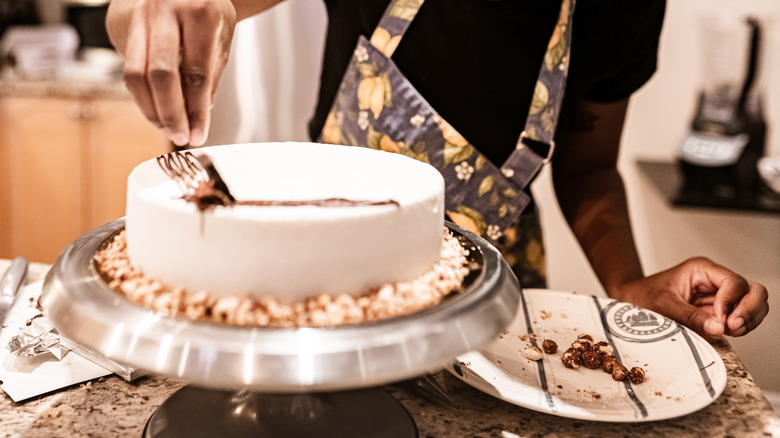The Common Mistake That Causes Sunken-In Cakes
You did everything right. You set your butter out at room temperature and took your eggs out of the fridge on time. You didn't overmix your batter and fully pre-heated your oven. So, why did your cake sink? Everyone makes mistakes when baking a cake; there's one reason yours might not have reached the heights you hoped to achieve. The most likely cause of a sunken cake is underbaking. Yes, even if your cake looks delicious and golden brown on the edges, your cake might still be a victim of underbaking.
A cake will collapse if it does not have the structure to support its volume. Underbaking your cake causes it to collapse inwards because the batter in the middle still has not fully baked. This can happen even when the center of your cake appears to be done in the oven, which makes determining your bake level more difficult. Cakes may appear fully cooked on the surface but can still be undercooked, especially in the final stages of baking; the center of your cake takes longer to bake than the outer edges. Sometimes, it can be tricky to determine how cooked the middle of your cake is without directly testing its doneness.
Determining doneness
How do you test to determine that your cake is fully cooked through? Well, the best way to gauge a cake's doneness is to get in there, so to speak. Before removing your cake from the oven, you should test to make sure your cake is finished baking by inserting a toothpick, knife, or another sharp, small instrument into the center of your cake. If it comes out clean or covered in a few crumbs, then your cake is most likely done. However, if uncooked or gooey, semi-cooked batter comes out, keep your cake in the oven a little longer.
Another way to gauge your cake's doneness, especially if you have not baked your cake for the time the recipe suggests, is by lightly shaking the cake pan. A cake that jiggles in the middle isn't done – no matter how brown the cake may look on top. Additionally, if your cake is mushy on top, it most likely needs a few more minutes to cook, and you should probably pop it right back in the oven.
The best way to a done (and even) bake
What if your cake's bake is uneven? What if the center of your cake is gooey while your edges are overcooking? Try the following tricks to achieve an even bake, which prevents the collapse of an otherwise delicious cake.
One cooking method you might want to implement is covering your cake pan with aluminum foil. Covering your cake in foil while baking can help create an even bake on your cake by controlling the temperature within your pan, assuring an even browning process. This trick can be helpful for cakes that tend towards the drier side, as an uneven bake can cause unappealing, dry edges.
Another way to prevent sunken cakes is to ensure you're not overfilling your cake pan, as it can result in burned edges and an underbaked center. For the best results, especially in a round cake pan, fill to only about ⅔ of its capacity; this allows your cakes to rise properly. If your cake pan is already in the oven and not overly full — but still not fully baked — consider leaving it inside for about 10 to 15 minutes after turning it off. This tip works best for cakes with slightly underbaked centers because it allows them to bake thoroughly without over-browning the edges.


